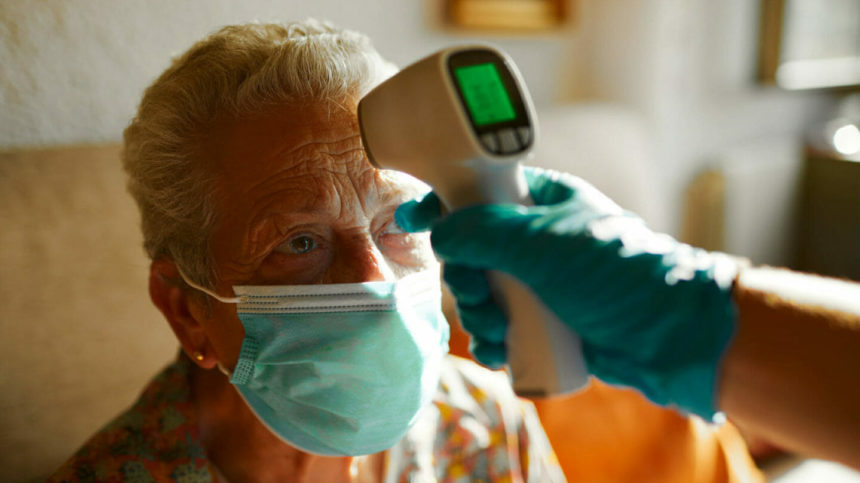
The COVID-19 pandemic significantly degraded the strides made over the last two decades in improving patient safety, particularly in long-term care, according to a new editorial by researchers with the Centers for Medicare and Medicaid Services and the Centers for Disease Control and Prevention.
The article, published in the New England Journal of Medicine, pointed to a “substantial deterioration” on multiple patient-safety metrics since the beginning of the pandemic. Healthcare-associated infections (HAIs), for example, increased significantly during 2020, reversing years of progress. In addition, during the second quarter of 2020, skilled nursing facilities saw rates of falls causing major injury increase by 17.4% and rates of pressure ulcers increase by 41.8%.
“The surges of the delta and omicron variants of SARS-CoV-2 in late 2021 and early 2022 do not bode well for a return to pre-pandemic levels for any of these indicators,” wrote the authors, which included CMS’ Chief Medical Officer Lee A. Fleisher, M.D.; Deputy Director for Quality and Value Michelle Schreiber, M.D.; and Denise Cardo, M.D., and Arjun Srinivasan, M.D, both of the CDC.
They also noted that these safety declines present an opportunity and an obligation to re-evaluate healthcare safety with an eye toward building a more resilient health care delivery system, “capable not only of achieving safer routine care but also of maintaining high safety levels in times of crisis.”
APIC call to strengthen infection control programs
In response to the article, the Association for Professionals in Infection Control and Epidemiology (APIC) called on healthcare organizations to assess their infection prevention capacity and strengthen prevention programs by adding personnel, resources and training to support both infection prevention and surge capacity for future pandemics.
“The current pandemic illustrates that our healthcare facilities are not where they need to be in terms of infection prevention and patient safety,” the group said in a statement. “Facility wide infection prevention programs are critical and require adequately staffed, trained, and resourced infection prevention and control departments. We must bolster our infection prevention and control staff capacity in our system of healthcare to simultaneously manage HAIs and future pandemics.”
The group noted, however, that expanding capacity requires greater federal and state investment in the infection prevention and control infrastructure.
“This is not the time to ask infection prevention teams to do more with less,”APIC said. “it’s essential that hospitals, clinics and long-term care facilities have enough infection preventionists to train staff and monitor safety protocols so that dangerous pathogens do not spread and lead to infection.”
APIC is also launching a new campaign around this effort, “HAI Fast Forward: Accelerating HAI Prevention,” which will include a series of webinars and other resources available to help organizations make headway in reducing their HAIs back to pre-pandemic levels
“We can’t let the lessons learned from COVID-19 go to waste,” the group said. “Building stronger infection prevention programs throughout healthcare will not only improve our ability to protect the public during future pandemics but will simultaneously improve patient safety.”





